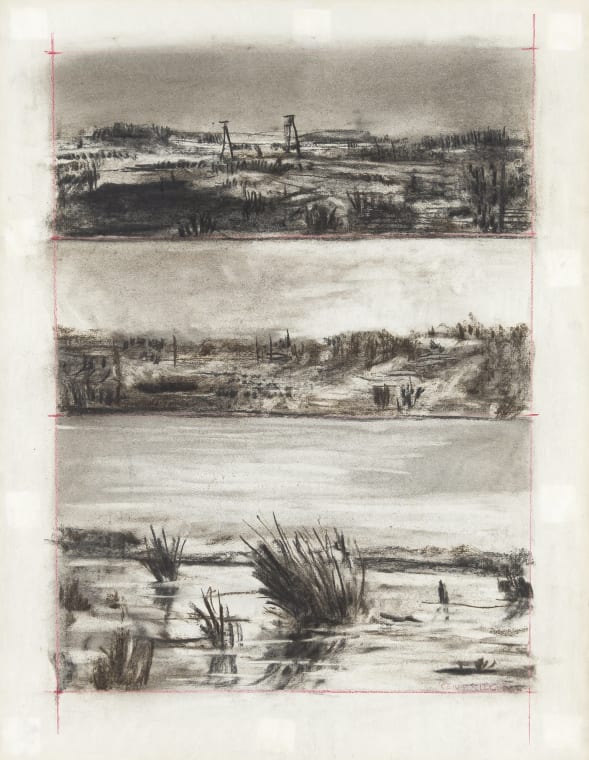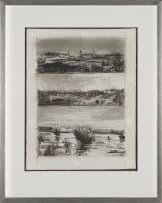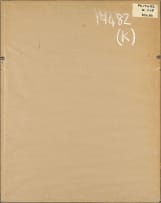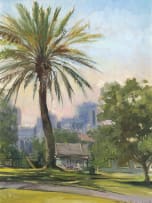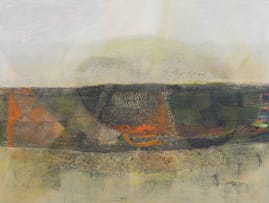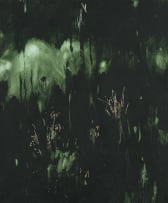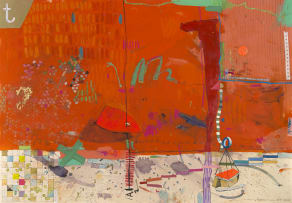Curatorial Voices: African Landscapes, Past and Present
Live Virtual Auction, 19 February 2024
Curatorial Voices: African Landscapes, Past and Present
About the SessionFrom Thomas Baines to Jake Aikman, Curatorial Voices: African Landscapes, Past and Present will showcase art by pioneering modernist and trailblazing contemporary artists, spanning 175 years of visual landscape painting on the African continent. This comprehensive auction reveals a nuanced understanding of the diverse cultural, historical, and environmental contexts that have shaped artistic representations of the landscape. Through an examination of various themes, the auction seeks to engage viewers in a dialogue that transcends time and space, connecting past representations to contemporary perspectives. The auction attempts to engage with the diversity of artists that have shaped and continue to shape the depiction of Africa through time.
The auction invites viewers on a captivating journey through the artistic expressions that mirror the multifaceted nature of African terrain. Through meticulous curation and insightful analysis, the catalogue aspires to be a valuable resource for scholars, art enthusiasts and anyone eager to embark on a thought-provoking exploration of Africa’s rich and complex artistic heritage.
Curatorial Voices
Recognising the dynamic discourse surrounding African Landscape, both past and present, the auction features texts by invited contemporary curators responding to the auction selection and themes. As external voices, they provide critical insights into the complexities of the landscape theme. By amplifying these contemporary perspectives, the exhibition seeks to bridge the gap between traditional representations and the ever-evolving discourse on the role of African art within the global art market.
Azza Satti, Independent Curator, Kenya
Azu Nwagbogu, Founder and Director of the African Artists’ Foundation (AAF), Nigeria
Camilla van Hoogstraten, Head of Sales, Latitudes Online
Ugoma Ebilah, Curator, Gallerist & Founder of Bloom Art
Nkgopoleng Moloi, Independent Curator, South Africa
Incl. Buyer's Premium & VAT
About this Item
signed
Notes
In 1999, during the initial wave of his global reception, William Kentridge made his first video installation to incorporate domestic furniture. Titled Sleeping on Glass, the work featured video-transfer reproductions of his charcoal drawings projected onto a mirror atop an antique chest of drawers. In 2001, Kentridge made a second work in this style, Medicine Chest, from which this drawing is derived. The installation comprises a found medicine chest with its mirrored back replaced with a screen showing a 5-minute 50-second animation of various charcoal and coloured pencil drawings. Featured in Kentridge's first American career survey in 2001, the drawings included depictions of personal-care objects and other household objects stacked in three rows, as in a cabinet, some of these arrangements quoting still lifes by Chardin, Morandi and Philip Guston, as well as various self-portraits, written instructions ("Nil per mouth"), newspaper fly-bills ("Shopping mall's bloody Monday") and landscape drawings. Some of the landscape drawings are rendered in the three-tiered format of the still lifes. The present lot is an example.
The unpeopled post-industrial landscapes in this drawing evoke the southeastern periphery of Johannesburg. "It is an area I have known vaguely since childhood, but in detail since I worked as an art director on a film there, in which the yellow sands of the mine tailings had to stand in for the Namibian desert."1 Kentridge's interest in landscape is highly analytical. "The landscape hides its history. The general nature of terrain and landscape as image is to appear as fact … I am really interested in the terrain's hiding of its own history and the correspondence this has not only with painting, but with the way memory works. The difficulty we have in holding onto passions, impressions, ways of seeing things, the way that things which seem to be indelibly imprinted on our memories still fade and become elusive, is mirrored in the way in which the terrain itself cannot hold onto the events played out upon it."2
Many of Kentridge's most acclaimed drawings held in collections were used as drawings in his films. In this sense, their meaning, while obviously determined by what they portray, is also relational and linked to their usage within a film installation. "As the movie unfolds, the image [of the medicine chest] is transformed into a window, a birdcage, a kitchen cupboard, a still life, a curiosity box, and a number of other variations of container," elaborated curator Dan Cameron. "On-going physical metamorphosis is at the thematic heart of Kentridge's work and takes precedence in this piece over the idea of character and narrative, in a way that suggests a strong metaphysical undercurrent. The act of projecting a film within a domestic object also underscores the motif of human intimacy, which sharply differentiates Kentridge's art from that of other artists dealing with questions of cultural change and transformation."3 The tension between human intimacy and terrain as social fact is central to an appreciation of this important drawing.
1. William Kentridge (1999) William Kentridge, London: Phaidon, page 126.
2. Ibid., page 126.
3. Dan Cameron (2001) curatorial statement for exhibition William Kentridge, New Museum, New York, 3 June to 16 September 2001: https://archive.newmuseum.org/exhibitions/374.
This lot has been selected by Curatorial Voice: Azu Nwagbogu.
Provenance
João Ferreira, 2002.
Private Collection.
Exhibited
New Museum, New York, William Kentridge, Solo Exhibition, 3 June - 16 September 2001.
Literature
William Kentridge (1999) William Kentridge, London, Phaidon, a similar example illustrated on page 126.
